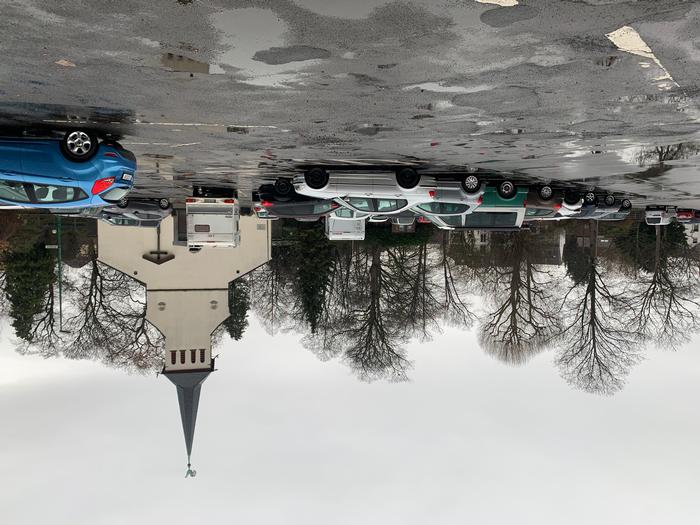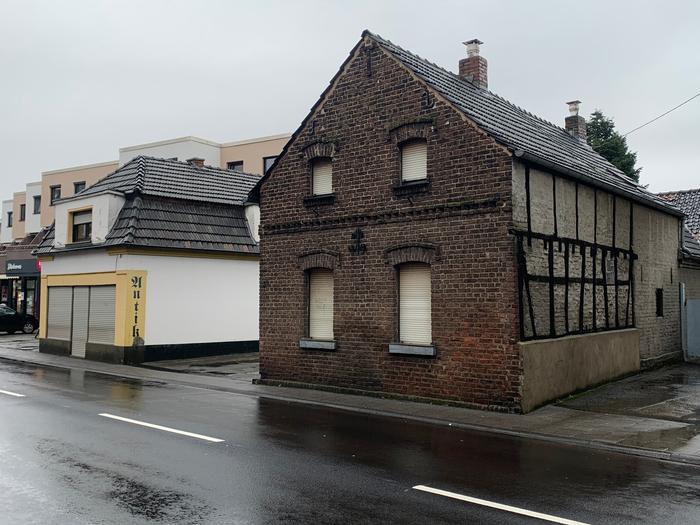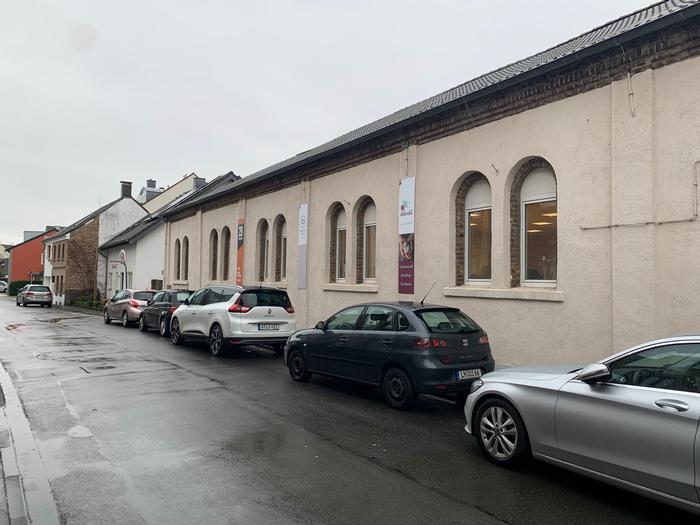Jacob Leckie Schleussel and Ting-Chun Yang - EssayFostering Change through Images: How Architects Can Lead the ConversationThroughout history, architects and urban planners have more than once been enablers of the display of wealth and power. We are taught about the Stourhead Estate in the United Kingdom as a marvellous example of the English Landscape Garden whilst omitting the involvement of the builder’s family in speculation in the transatlantic slave trade. We are taught about the creation of suburbs in the United States as a result of economic prosperity and advancement in industrial prefabrication rather than mentioning its role in the effort to enhance residential segregation. We learn about Frederick Law Olmsted’s Central Park in New York City without talking about the Seneca Village community that fell victim to its creation.
Needless to say, if architecture acting as a physical manifestation of power were the only means of artistic expression for members of our profession it most certainly would be the inescapable agent of our downfall. Among few other professions, architects have the rare ability to work prospectively. Architects can portray the future in a way that seduces people into imagining alternatives to the existing status quo.
Like many German cities that are affected by rural-urban migration, the city of Cologne is facing a growing shortage of housing and is projected to gain another 200.000 inhabitants by the year of 2040, according to a study commissioned by the provincial government. To fight the mounting challenges of housing shortage, land use for urbanisation and climate change, the young local architect Martin Bachem proposed the construction of a high-rise ring in 2015 that would symbolically represent the old medieval city wall and create living space for 100.000 new residents.
Well aware that his proposal “Stadtplastik” was far from providing a feasible solution within the political climate at that time, Bachem’s rendered images and collages created a thought-provoking vision that was impossible to ignore. Due to the imposing nature of images, his proposal triggered instant press coverage. What followed was a public discussion about the future of the city involving the mayor, the head of the city planning department and local residents. Martin Bachem’s proposal is proof that architects can influence their environment not only by creating buildings - and moreover suggests that visualising ideas and offering new perspectives should be the driving force behind our work.
A glimpse at the business practices of real-estate investment company Signa in collaboration with world-renowned David Chipperfield Architects is a clear illustration of a contrary use of images for the development of large shopping malls throughout Germany. With the help of the architectural office, the investor publishes rendered images of the proposed new buildings that are calculated to give the impression of historical legitimacy within the surrounding neighbourhood. For their shopping mall project in Germany’s capital Berlin, the company proposed the reconstruction of the colossal facade of the a building that was erected in the same place in the 1930s and presented an atmospherical rendered image showing a white, bourgeois elite dancing on the rooftop. This, however, stood in stark contrast to the diverse und multi-cultural neighbourhood of Berlin-Kreuzberg in which they sought building permission und faced a barrage of criticism by local politicians and residents. As a reaction to the public’s indignation, images and terminology were changed and mobile cafés set up in order to imply genuine enthusiasm for the local community and to deceive the public into accepting their proposal. In this case, the architects act alongside the investors as antagonists to the public’s interest.
The comparison of the proposal "Stadtplastik" for the city of Cologne by Martin Bachem and the shopping mall project in Berlin by David Chipperfield Architects offers a critical insight into the ambivalence between contribution and complicity that shapes the architectural profession. Facing social constraints of receiving recognition as young future architects on a city wide platform, we decided to focus our query on the local community of Cologne-Loevenich.
Located along the ancient Roman route to the city of Aachen (latin: Aquisgranum), Loevenich was for many centuries an insignificant village outside the city walls of Cologne, whose morphology was mainly shaped by its three farmhouse courtyards and the houses of agricultural workers scattered along the main road. The construction of the railroad and rapid population growth during the industrial revolution encouraged workers in factories in the nearby city of Cologne to settle in Loevenich, commute to work by train and thereby escape the problem of inner-city housing shortage. This marked the beginning of its development towards a dormitory town and suburb of the adjacent city. When a wave of incorporations struck the region in the 1970s, the municipality of Loevenich that had remained independent until then, finally gave up its hyperlocal identity in favour of a superordinate identification with the city of Cologne.
Along with the loss of its administrative autonomy, the incorporation meant ceding all planning authority to the central body of government in Cologne. As a result of the regional incorporation effort, suburbs were neglected which is indicated by the fact that the main focus lay on touristic city centres. As dormitory towns, suburbs were seen as a means to an end. Little to no attention was paid to green spaces and places of public life that were traditionally centred around the local church parish found no secular equivalent. With the demise of stationary retail, the genius loci today is characterised more by dependence on the city of Cologne than by a spirit of its own.
Within the perimeter of a city of one million inhabitants, Loevenich is considered one of eighty six "Veedel”, which is the Cologne dialect word for quarter or neighborhood. If one views the city as fabric with the weaving-related terms tissue, texture, thread and knot, then none of the latter can be found in this part of the city, at most indications of a once flourishing social life.
A 19th century clay pit which, after being exhausted, functioned as a waste disposal site, was converted into a field for the local soccer club in the 1950s. Since the completion of the new development area in the neighbouring village a few years ago and the subsequent move of the club, the field has become wildly overgrown and lies fallow for lack of major initiatives. In order to take advantage of affordable sports and leisure facilities, residents have no choice but to seek them in one of the neighbouring villages that are separated from Loevenich by agricultural land.
The village square in front of a three-nave basilica from the twelfth century with its adjacent parish hall once was the centre of social life within the majority Catholic village community. Today the architectural ensemble creates an ironic kind of construction site aesthetic. With a sea of parked cars and sealed asphalt surfaces, it is reminiscent of the mournful fate of the old piazza in the Sicilian town of Giancaldo as pictured in the movie Cinema Paradiso. Merely on two weekends per year are marquees set up on the square to provide a temporary indoor space for local festivities.
Within walking distance of the church is a pub whose long annex building in brick was originally used as a ballroom and later, until the 1970s, as a movie theatre. Today the building is divided into separate units for commercial use and is not open to the general public.
Although these three examples are symptoms of a larger problem, they are a reflection of the indifference and unwillingness of municipal planning commissions to maintain or create publicly accessible places for social life. Looking beyond the current situation, a deeper inquiry into Cologne’s history of social norms and business practices reveals some of the challenges that are still relevant today.
Unfortunately for its residents, the city of Cologne is known to have a history of disregarding their wishes with a clique of political dignitaries that practice nepotism and reject transparency. The idea of intermingling to procure reciprocal benefits has its roots in the Middle Ages when Cologne removed itself from the political influence of the archbishop as territorial sovereign and expanded its power as a free city within the Holy Roman Empire along the principle trade route of the Rhine river. Today, this practice known as "Koelsche Kluengel" continues to be rooted in local culture. While its effects are not always negative, this nontransparency opens the door to corruption, sets a focus on ostentatious projects in the inner cities and creates politically disengaged residents.
A glimpse at bullet points in election manifestos of major political parties reveals a lack of courage and direction concerning the built environment. Suburban communities are simply seen as areas with lower property prices where land can continuously be consumed to advance the urban sprawl through large-scale developments of single-family homes. For a steadily growing community like Loevenich, this only exacerbates the need for a comprehensive strategy toward community interaction.
With the accelerated demise of stationary retail and the rise of remote working, propelled by the world-wide Sars-CoV-2 pandemic, life is slowing down and the place of residence is gaining importance among local residents. This becomes particularly apparent in the increased frequency of pedestrians filling the sidewalks and field paths. Throughout the village, residents have demonstrated their newly awakened sensibility for their home by planting a new tree, setting up a new fence in their garden or carrying out minor renovations in the hermetically sealed interior. However, this enthusiasm often finds its stylistic articulation in a style inspired by holiday destinations and magazines that promote something Reyner Banham may call a „mass produced fantasy for people to live in” rather than being rooted in the identity and fabric of the village.
To address these challenges and react to a lack of vision for the local community by municipal politicians, we envision a multi-faceted course of action in four stages designed to activate the local community. Residents are called to participate in grass-roots processes and create an atmosphere of commitment and change.
The first stage of the approach includes a series of interviews conducted with local residents in a manner resembling anthropological field research to gather information about their daily life and their relationship to their place of residence. In addition, representatives of local clubs and organisations are consulted to learn about their current activities and detect possible envisioned changes that have not yet been implemented due to a lack of momentum. Finally, we wish to acquire an in-depth knowledge about local guidelines and the feasibility of interventions by establishing contact with the municipal planning authority.
In the second stage, the information is compiled, evaluated and interpreted to form the basis for a new vision for the suburban neighbourhood of Loevenich. A design team consisting of future architects, urban and landscape planners can exploit all available means of visualisation to produce clear images based on the community’s input more directly in touch with the people. Planned interventions can range from permanent to easily reversibel and temporary measures, but must always be truly attentive to the needs of its users.
Communicating this vision to the local community and creating an action plan to be presented in a public event, an exhibition and a local information campaign is the objective of the third stage. The local community is encouraged to actively participate in the discourse with its own ideas and to influence the decision. The design team as decision-making body incorporates the results into the consideration process. Communication takes place in an open and reciprocal manner. As a general rule of thumb refining the vision should happen in close collaboration with the residents. However, when there is a discrepancy between the values of the planners and members of the local community, it must be considered not a backlash but a chance for the design team to eliminate preconceptions and reshape the idea of what an ideal community should be. This open forum discussion is posed to create a dynamic and enthusiasm among residents that can be capitalised on through a reliable and binding confrontation of municipal government officials with the results. In this way, the local community can gain the upper hand to demand better green spaces, a community building or a youth center.
In the fourth and final stage, we hope to create a virtual and physical community hub as a breeding place for ideas relating to community improvement. The loosely defined community site is not a house, but a temporary or permanent space that can feel like a welcoming home and be used for events and social gatherings among neighbours. Making architecture, urban and landscape planning participatory allows the local community to continuously reinvent itself and reengage residents with the real world and the significance of a versatile physical experience close to our place of residence.
Most importantly, any undertaking should help shape understanding not only of the city but of their neighbourhood in particular as a public living room. Our local community should be an extension of our own home, not an anonymous lifeless space. Becoming spokespeople that reject the planning authority’s indifference toward the city on a neighbourhood scale and triggering a grass-roots initiative increases sensitivity to existing qualities and is a goal well worth striving for.
As future architects we are not political decision-makers, we plant the seeds of change with our ideas. The complex nature of social problems often exceeds our sphere of influence. But we cannot withdraw ourselves from the responsibility we bear. It touches our professional ethics to be true to our inner stance, to not simply produce designs that directly correspond to our client’s wishes - but instead thoroughly question them and push the boundaries toward a less conventional, more intelligent solution.
Local residents know what is good for their well-being. They know what is good for their health. They know that their community can evolve towards being more user-friendly and sustainable. As future architects and urban planners, we must help weave these perspectives into a bigger fabric of visions and guide the public toward designs that advocate a more inclusive, open and just community for all.
While local residents often have suggestions for improvement, it needs powerful images to induce vision into the conversation and well-executed initiative to convince people of an idea’s feasibility. As future architects, we are called upon to use our unique skillset to serve the need of our local community by guiding it step by step from concept to fruition. In doing so, we do not simply change the built environment one building at a time, but more strikingly create an atmosphere of positivity towards the future by spreading ideas that travel from one mind to another without boundaries.
Additional Help and InformationAre you in need of assistance? Please email info@berkeleyprize.org. |




